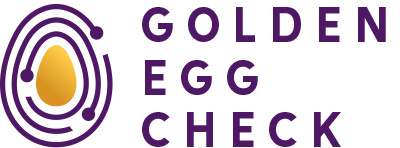Understanding investor expectations for early-stage startups
You don’t necessarily need a working product before pitching to investors, but it depends on your industry, investor type, and what stage you’re targeting. Many startups have raised funding with prototypes, proof of concepts, or even just compelling ideas backed by strong teams and market validation. The key is demonstrating investor readiness through other means when you lack a finished product.
Whether you should approach investors with or without a working product depends on multiple factors. Different types of investors have varying expectations for product development stages, and some actually prefer investing in earlier-stage companies. Understanding these nuances helps you make informed decisions about your funding timeline and approach.
Investors evaluating startups without fully developed products focus on different criteria than those assessing established companies. They’re primarily looking for potential and feasibility rather than proven performance metrics.
Team strength becomes paramount when you don’t have a working product. Investors want to see founders with relevant experience, complementary skills, and the ability to execute their vision. Your track record, domain expertise, and previous achievements carry significant weight in these early conversations.
Market opportunity analysis takes centre stage in pre-product pitches. You need to demonstrate a clear understanding of your target market, the problem you’re solving, and why customers will pay for your solution. This includes showing market understanding, customer insights, and validation of the pain point you’re addressing.
Business model clarity becomes crucial when you can’t demonstrate revenue. Investors want to understand how you’ll make money, your pricing strategy, and the scalability of your approach. A well-thought-out business model can compensate for the lack of a working product.
What counts as a working product when pitching investors?
A “working product” in investor terms doesn’t necessarily mean a fully polished, market-ready solution. Investors often consider various stages of product development as viable for investment discussions.
A minimum viable product (MVP) represents the most basic version of your product that delivers core value to users. This demonstrates your ability to build and validates your core assumptions about user needs.
Prototypes and proof of concepts show technical feasibility and help investors understand your vision. Even if they’re not market-ready, they prove you can translate ideas into tangible solutions.
Beta versions with limited user testing provide valuable traction data. They show real user engagement and feedback, which investors value highly as market validation signals.
Technical demonstrations, even of incomplete products, can be sufficient for deep tech or complex technology startups where development cycles are longer and investors understand the extended timeline to market.
Can you pitch investors with just an idea?
Yes, you can pitch investors with just an idea, but success depends on specific circumstances and how you present your case. Some investors actively seek out concept-stage startups, particularly in emerging markets or breakthrough technologies.
Your founder track record plays a significant role in idea-stage funding. Experienced entrepreneurs with previous achievements or domain experts with deep industry knowledge often secure funding based on their credibility alone.
Industry timing can make idea-stage investments more attractive. During technology shifts or emerging market opportunities, investors may fund concepts to secure early positions in promising sectors.
The strength of your market understanding and customer validation becomes critical when pitching ideas. You need compelling evidence that customers want your solution, even if you haven’t built it yet. This might include pre-orders, letters of intent, or extensive customer discovery conversations.
Your ability to articulate a clear path to product development and market entry will determine investor confidence. They need to believe you can execute on your idea within reasonable timeframes and budgets.
What alternatives can you show investors instead of a finished product?
When you don’t have a working product, several alternatives can effectively demonstrate your vision and capabilities to investors.
Detailed wireframes and mockups help investors visualise your product and understand the user experience you’re creating. These show thoughtful design consideration and user journey planning.
Comprehensive market understanding and competitive analysis demonstrate market knowledge and strategic thinking. This includes customer insights, focus groups, and detailed competitor assessments.
Customer validation through conversations, surveys, or pre-sales shows market demand. Letters of intent, pilot agreements, or early customer commitments provide strong signals of market interest.
Technical demonstrations of core algorithms, technologies, or processes can prove feasibility even without a complete product. This is particularly relevant for tech startups with complex underlying technology.
Partnership agreements or strategic relationships indicate market validation and potential distribution channels. These relationships can substitute for product traction in early-stage discussions.
How do different types of investors view product development stages?
Different investor types have varying expectations regarding product readiness, and understanding these differences helps you target the right investors at the right time.
| Investor Type | Product Stage Preference | Key Focus Areas |
|---|---|---|
| Angel Investors | Idea to MVP | Team, market opportunity, early validation |
| Accelerators | Concept to early traction | Scalability potential, learning ability |
| Venture Capitalists | MVP to proven traction | Revenue potential, growth prospects, market size |
| Corporate VCs | Prototype to market-ready | Strategic fit, technology advancement |
Angel investors often invest in very early stages, sometimes just based on the founder and market opportunity. They’re typically more willing to take risks on unproven concepts.
Venture capital firms usually prefer startups with some level of product development and initial market validation. They want to see evidence of product-market fit or clear progress towards it.
Accelerators and incubators specifically target early-stage startups and provide resources to help develop products. They’re comfortable with idea-stage companies but look for strong execution potential.
Why do some investors prefer early-stage startups without products?
Some investors actively seek pre-product startups for strategic reasons that can benefit both parties in the investment relationship.
Lower valuations at early stages mean investors can secure larger equity stakes for their investment. This potentially leads to higher returns if the startup succeeds.
Greater influence on product direction allows investors to apply their expertise and network to shape the product development process. This hands-on involvement can increase the likelihood of success.
Market entry timing advantages come from investing before competition intensifies. Early investors can help startups establish market positions before others enter the space.
Portfolio diversification through early-stage investments allows investors to spread risk across multiple opportunities while maintaining upside potential.
The ability to add significant value through mentorship, connections, and strategic guidance makes early-stage investments particularly attractive to experienced investors who want active involvement.
Making informed decisions about your funding timeline
Deciding whether to develop your product further before seeking investment requires careful consideration of multiple factors specific to your situation.
Industry norms significantly influence timing decisions. Software startups might seek funding earlier in development cycles, while hardware or biotech companies typically need more development before approaching investors.
Your personal financial situation affects how long you can bootstrap development. If you need funding to continue development, approaching investors earlier might be necessary regardless of product stage.
Competitive landscape considerations matter greatly. If competitors are moving quickly, raising funds early might help you accelerate development and market entry.
Your team’s expertise and track record influence investor confidence at different stages. Experienced teams might secure funding earlier, while first-time founders might benefit from developing more proof points.
The strength of your market validation and customer interest can justify early fundraising even without a complete product. Strong customer demand signals can compensate for product development gaps.
Consider implementing strategies to boost investor readiness regardless of your product stage. This preparation improves your chances of success whether you approach investors now or later.
Understanding different investment strategies can help you identify investors whose approach aligns with your current development stage and future growth plans.
The decision to pitch investors before having a working product isn’t simply about product readiness, it’s about overall investor readiness across multiple dimensions. Whether you proceed with early-stage fundraising or continue developing your product, focus on strengthening the areas that matter most to your target investors.




